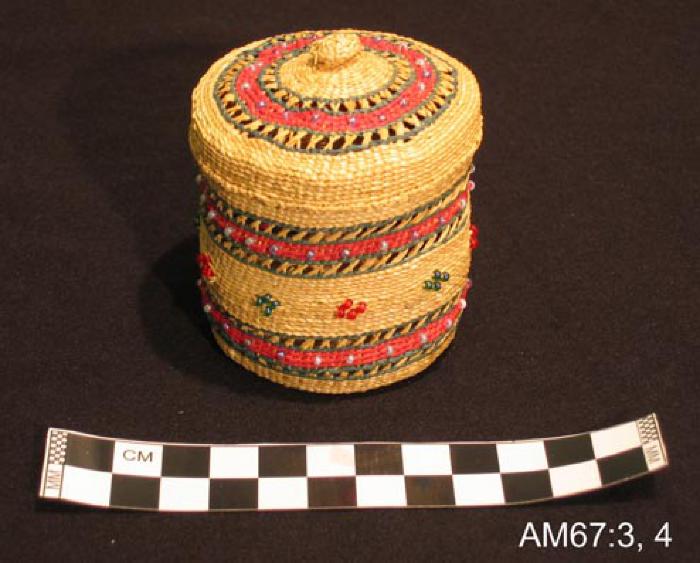Basket — Inartaq

Very few classic Alutiiq baskets are preserved today. Museums around the world hold just a handful of ethnographic and archaeological examples of this beautiful and functionally important art. Despite their rarity, baskets were an integral part of Alutiiq household equipment. They held small objects; were used as cooking, drinking, and eating vessels; and functioned as containers for food storage and collecting. Very large baskets, fitted with leather straps, even acted as backpacks for travelers to carry clothing and bedding. The tight weave of these baskets protected their contents from rain and sea spray.
In the Kodiak Archipelago, Alutiiq people wove much of their basketry from spruce roots that were dug from the forest floor, cleaned of their outer coverings, and split into flexible strands with a fingernail. Other common weaving materials included beach rye grass and baleen. Spruce-root baskets were woven upside down, with concentric rings of extra twining to reinforce their base. Some were painted or finely decorated with overlays of other weaving materials, for example, maidenhair fern. Today, basket weaving is experiencing a revival. Elders are passing the art to their families, and artists are studying museum collections to learn ancestral techniques and to share their knowledge at community workshops. Traditional forms are reappearing but have been supplemented with tiny baskets made into popular forms of jewelry: necklaces, pendants, and earrings.
